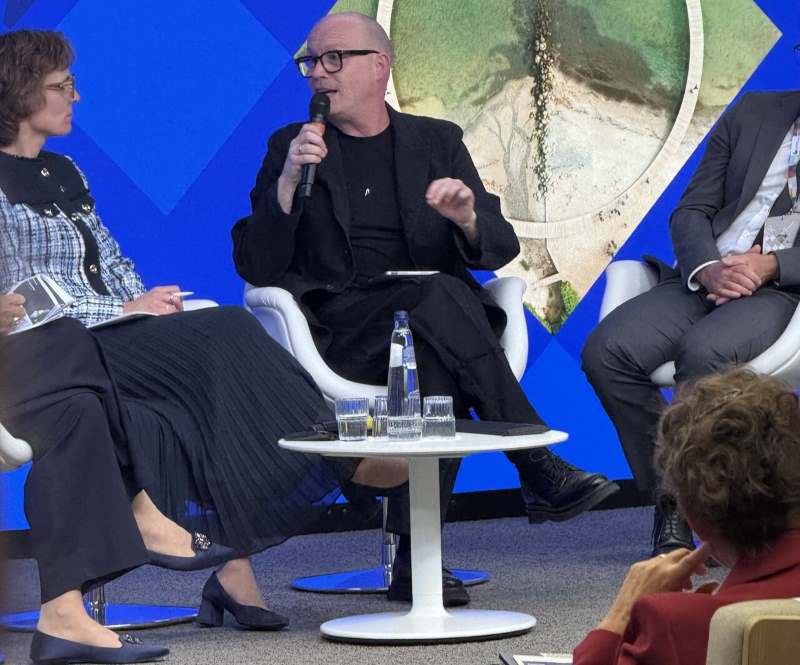
In a speech that captured both urgency and ambition, Danish MEP Rasmus Nordqvist stood before an audience of European policymakers, industry leaders, and sustainability advocates at a recent event hosted by the Danish Presidency of the Council of the EU 2025, and declared what may soon become the new mantra of Europe’s industrial future: ‘Circularity is security’.
Framing the circular economy not merely as an environmental agenda but as a pillar of Europe’s economic and geopolitical resilience, Nordqvist called it “the industrial revolution Europe needs.” His vision was clear transitioning away from the old linear ‘take-make-dispose’ model toward a closed-loop, regenerative system would be central to ensuring that Europe remains competitive, resource-secure, and globally relevant in a century defined by ecological limits and supply-chain volatility.
Circular revolution as industrial policy
“Keeping materials in use is not just a sustainability issue it’s a security issue,” Nordqvist said, underscoring that Europe’s dependence on imported raw materials leaves it exposed to global shocks, from energy crises to geopolitical tensions. Circularity, he argued, is the lever that can reduce this vulnerability.
The model he envisions would turn waste into value, shorten supply chains, and create hundreds of thousands of new jobs not in extractive industries, but in design, repair, remanufacturing, and recycling. It is a blueprint that marries ecological responsibility with economic competitiveness.
Indeed, recent European Commission data echoes this potential: a fully realized circular economy could add €1.8 trillion to the EU economy by 2030, while cutting net resource use by 20 per cent and generating over 700,000 new jobs across the bloc. “This is industrial policy for the 21st century,” Nordqvist emphasized. “Circularity is not just about reducing harm it’s about creating strength.”
Barriers on the road to circularity
But as Nordqvist and other speakers at the event made clear, Europe’s path to circularity remains uneven and beset with structural barriers. The first is price disparity. Virgin materials often subsidized, readily available, and globally traded still undercut recycled or secondary alternatives. This distorts the market and discourages investment in circular business models.
Second, Europe’s single market is anything but single when it comes to circular economy rules. The MEP lamented the “patchwork of national regulations” governing product standards, waste classifications, and recycling protocols creating complexity, raising compliance costs, and undermining scale.
Third, investor uncertainty looms large. The absence of EU-wide standards and metrics for circularity, such as how to measure product durability, repairability, or recyclability makes it difficult for financiers to assess risk and channel capital toward credible green innovations.
Finally, there’s the challenge of product design itself. “Too many products are still designed for obsolescence, not for longevity,” Nordqvist observed. Without embedding circular principles at the design stage, efforts to recycle or reuse often fail downstream.
A blueprint for Europe’s circular future
To overcome these hurdles, Nordqvist outlined a four-pillar action plan that could reshape Europe’s industrial landscape.
1. Closing the price gap: He proposed expanding the Carbon Border Adjustment Mechanism (CBAM) to include plastics and chemicals, effectively internalizing the environmental cost of virgin materials and levelling the playing field for recycled alternatives.
2. Harmonizing regulations: A unified framework for waste and product rules across member states would reduce friction, lower costs, and enable true circular scalability within the EU’s single market.
3. Mobilizing capital: Establishing EU-wide metrics and standards for circularity could unlock private and institutional investment, giving confidence to investors seeking credible, measurable impact.
4. Designing for circularity: Nordqvist urged faster implementation of the Ecodesign for Sustainable Products Regulation (ESPR), prioritizing high-impact sectors such as electronics, textiles, and construction materials industries responsible for a disproportionate share of Europe’s material footprint.
“Europe has always led through innovation,” he said. “Now we must lead through regeneration.”
Emergences of a broader consensus
The event, moderated by Sandrine Dixson-Declève, Co-president of the Club of Rome, featured a lineup of distinguished voices including Emmanuel Chaponniere, Adèle Naudy-Chambaud, and Commissioner Jessika Roswall, who reinforced the call for an industrial strategy that fuses green ambition with economic realism.
Roswall noted that aligning circular policies with trade, competition, and investment frameworks will be critical to scaling their impact. “Circularity cannot exist in isolation,” she said. “It must be embedded across Europe’s value chains—from mining and manufacturing to consumption and waste.”
Chaponniere emphasized that the next wave of competitiveness will come not from resource extraction but from resource efficiency, echoing Nordqvist’s assertion that the circular transition offers Europe a “first-mover advantage” in the race for green markets.
Circularity as Europe’s strength
As the discussion drew to a close, Nordqvist’s message resonated as both a warning and a rallying cry. Europe, he suggested, stands at a crossroads between industrial decline if it clings to the linear past, and renewed leadership if it embraces circularity as its strategic core. “Waste should not be a burden,” he concluded. “It should be a resource. And in that transformation lies Europe’s strength.”
From vision to execution
The shift Nordqvist envisions is not merely environmental reform it’s economic reinvention. Achieving it will require political will, regulatory coherence, and substantial investment in infrastructure and innovation. But perhaps more importantly, it will demand a mindset change from consumers, corporations, and governments alike. For decades, Europe’s prosperity was built on throughput more extraction, more production, more consumption. The next era, as Nordqvist and his peers argue, must be built on circulation more reuse, more repair, more resilience.
As the EU crafts its post-2025 industrial agenda, the message from Brussels is becoming increasingly clear: the future of European competitiveness may well hinge not on how much it produces, but on how intelligently it reuses.











